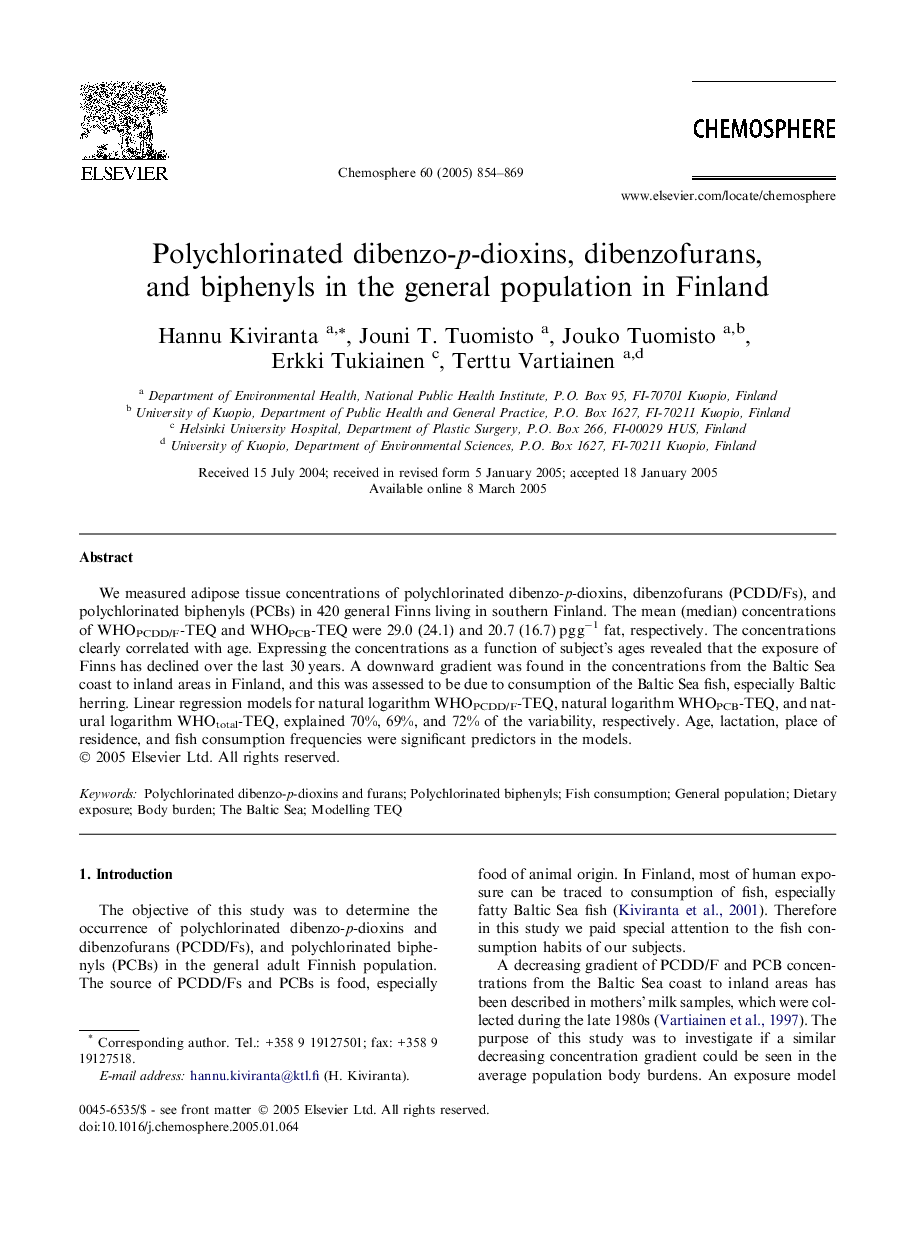| Article ID | Journal | Published Year | Pages | File Type |
|---|---|---|---|---|
| 9451249 | Chemosphere | 2005 | 16 Pages |
Abstract
We measured adipose tissue concentrations of polychlorinated dibenzo-p-dioxins, dibenzofurans (PCDD/Fs), and polychlorinated biphenyls (PCBs) in 420 general Finns living in southern Finland. The mean (median) concentrations of WHOPCDD/F-TEQ and WHOPCB-TEQ were 29.0 (24.1) and 20.7 (16.7) pg gâ1 fat, respectively. The concentrations clearly correlated with age. Expressing the concentrations as a function of subject's ages revealed that the exposure of Finns has declined over the last 30 years. A downward gradient was found in the concentrations from the Baltic Sea coast to inland areas in Finland, and this was assessed to be due to consumption of the Baltic Sea fish, especially Baltic herring. Linear regression models for natural logarithm WHOPCDD/F-TEQ, natural logarithm WHOPCB-TEQ, and natural logarithm WHOtotal-TEQ, explained 70%, 69%, and 72% of the variability, respectively. Age, lactation, place of residence, and fish consumption frequencies were significant predictors in the models.
Keywords
Related Topics
Life Sciences
Environmental Science
Environmental Chemistry
Authors
Hannu Kiviranta, Jouni T. Tuomisto, Jouko Tuomisto, Erkki Tukiainen, Terttu Vartiainen,
